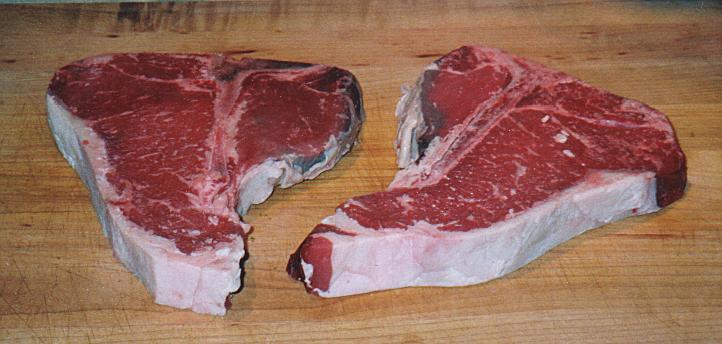 How to BBQ - Cooking Measurements
How to BBQ - Cooking Measurementsby Joe "
Woods Goods and Stuff"
Except in industry, the United States, despite some attempts, has never adopted the metric system of
Cooking Measurement used in most of the rest of the world. Americans measure distances in miles (each one divided into 1760 yards or 5280 feet) and worry about putting on a few extra pounds (each divided into 16 ounces) after a heavy meal.
Most world cuisines use metric weights for non-liquid ingredients and metric volumes for liquids. The United States uses its own system of volumetric measurements for most ingredients, weights for others, and sometimes expresses amounts in both, as in “one pint (8 ounces) of milk” or “four tablespoons (two ounces) of butter.” The liquid “ounces” in the first example and the solid “ounces” in the second have the same name, but reflect two different measurement systems. A solid “cup” of flour and a liquid “cup” of milk show a similar discrepancy.
All this can be confusing to non-Americans, but American cooks take it in stride. The fact that the world metric system makes eminent logical sense is meaningless to a cook raised with pounds and ounces, teaspoons and tablespoons, cups, pints, quarts, and the like. British cooks, or Americans trying to use British recipes, can become even more confused, since the British and American systems used many common measurement names, yet the measurements aren’t always the same.
American recipes refer almost uniformly to the Fahrenheit system of heat measurement in which 32 degrees is the freezing point and 212 degrees the boiling point, equivalent to zero and 100 degrees Celsius, respectively.
Because of the proliferation of food information from all over the world, the savvy American cook knows how to deal in metrics and may even have metric measuring tools and scales. Nevertheless, for those who are confused, here are some American food measurement basics:
- Liquid measurements (from small to large) can be expressed in teaspoons, tablespoons, fluid ounces, cups, pints, quarts and gallons.
- A liquid tablespoon is three teaspoons. Sets of calibrated measuring spoons are usually available in quarter teaspoon, half teaspoon, teaspoon, tablespoon, and two-tablespoon (coffee scoop) sizes. Cooks use these spoons for measuring out small amounts of ingredients like extracts, salt and pepper, spices, minced garlic, chilies, and alcoholic beverages used in cooking.
- From the standpoint of the fluid ounce, a single fluid ounce is two tablespoons. Eight fluid ounces make up a cup, sixteen ounces a pint, thirty-two ounces a quart.
- From the standpoint of the fluid cup, two cups make a pint, four cups make a quart, sixteen cups a gallon.
- From the standpoint of the pint, two pints make a quart, eight pints a gallon (four quarts). Warning: Dry measure pints and quarts (2 pints), used for fruits and vegetables, are slightly larger (by about one-sixth) than liquid measure pints and quarts. Larger dry measures like pecks (8 dry quarts or 16 dry pints) and bushels (4 pecks, 32 quarts, 64 pints) are used mainly in agriculture.
- Dry ingredients, particularly in baking, may be given in traditional weights (16 dry ounces make one pound) or in a system of cups that do not match exactly the liquid type of “cup” measurement. To make the system more confusing, because of the different textures of ingredients, a “cup” of one ingredient may not weigh the same as a “cup” of another. A cup of unsifted flour weighs five ounces, a cup of granulated sugar weighs seven ounces, while a cup of butter (2 sticks) weighs eight ounces.
For dry “cup” weight, stainless steel nested measuring sets usually contain one cup, half cup, quarter cup and eighth cup sizes. Glass or Pyrex liquid measuring cups usually have spouts and are often calibrated both in traditional and metric liquid scales; one cup, two cup (one pint), and quart sizes are common. Most cooking scales, mechanical or electronic, are calibrated for both traditional and metric systems.
The new cook in America is well advised to take some care in interpreting American recipes, especially for baked goods, using metric conversion tables when available, and common sense at all times. Recipe software packages and Internet recipe sites may have a feature that allows conversion of units automatically. A good rule of thumb for a cook is the notion that if a recipe seems not to be carefully and consistently written, the dish itself may be something of a risk. The best recipe writers know how to express themselves with clarity and consistency.
How to BBQ - Cooking Measurementsby Joe "
Woods Goods and Stuff"






